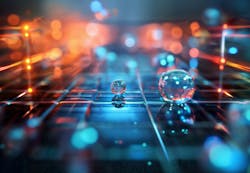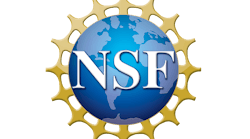NSF $20M grant funds National Quantum Nanofab at CU Boulder
A $20M award from the U.S. National Science Foundation (NSF) will help create a nanoscale fabrication facility at the University of Colorado Boulder to enable quantum device fabrication, characterization, and packaging essential to advancing quantum applications—ranging from quantum computers and networks to atomic clocks and advanced quantum sensors.
Laser Focus World: How do you start pulling together a project like the National Quantum Nanofab?
Diddams: The key is the community around us—we have an amazing and diverse group of people in Boulder who are working on quantum devices, primarily focused on atoms, ions, and photons. This community is driving the need for new fabrication tools and the ability to build new quantum devices, aspects of which we don’t fully know how to build yet. It’s an interesting state between fundamental research and trying to figure out what an actual quantum chip or sensor will look like. But one thing is clear—we need new capabilities and infrastructure to fabricate quantum devices. So this is really what’s driving it. Once we got the team together, we figured out which tools and capabilities we will need.
LFW: Are you envisioning a quantum maker space?
Diddams: A quantum maker space sums it up quite well. I also like to say it’s a quantum machine shop for the 21st century. The idea of a maker space is that you can come here to build quantum chips or the basis of quantum devices for computing, sensing, or communications. It’s really a place for a wide range of people—faculty, students, government collaborators, and the industry—who are starting to build quantum devices. We hope our tools and resources become so good we draw people in from outside Colorado. We want people to know there’s something unique they can do or learn here or come create themselves.
LFW: Is $20M enough to get going?
Diddams: Yes, it’s enough to make a big step forward. We’re very grateful to the U.S. NSF for this funding. NSF is focused on providing funds for infrastructure because they recognize that while scientists, faculty, and people within the industry have ideas about quantum devices, being able to realize them often gets held up by infrastructure. This $20M grant puts us in a great position to have an impact.
LFW: Is there a fab onsite at CU already?
Diddams: The University of Colorado has nanofab facilities. What makes the new NQN different are the people who will be involved. There is an analogy to a more conventional machine shop, where you would find very similar tools on the surface—drill press, a lathe, a milling machine. What makes it unique are the people who operate these tools and have a vision of what you can do with them. Our nanofab will be unique not just because of the tools, but also because of the people operating and using them.
LFW: What types of tools do you plan to have at the NQN?
Diddams: Many of the tools will be those used for lithography, patterning, etching, and bonding. Quantum is intrinsically small, and many of the devices we envision will have nanoscale features. If you want to build quantum devices or chips, they require materials and combinations of materials that are different than silicon we use for integrated circuits today. So we will need tools that can process different materials and put them together in new ways to operate in challenging environments like high vacuum or cryogenic temperatures.
LFW: What types of training do you plan to offer?
Diddams: The NQN is really coming up at the right time—there’s a big parallel effort in our country with the CHIPS Act that is reinvigorating tools and technologies for integrated circuits, and all kinds of different chips and their fabrication. There’s a big demand now as companies move to invest in new manufacturing plants or facilities within the U.S. to train people to work there. We plan to offer development classes and opportunities for undergrads or grad students to work on nanofabrication tools so they can learn to make basic quantum devices—it will be super important for the future workforce to know how to do this.
LFW: For people into lasers, optics, and photonics, what’s the coolest thing going on at NQN?
Diddams: It’s nanophotonics. If you go to a lab now and, for example, look at an advanced optical clock—the best time-keeping pieces humans have ever made are quantum-based optical clocks—it’s usually spread out over a big board and its optomechanical mirrors and mirror mounts are essentially a one-off work of art.
Thinking to the future of similarly powerful quantum devices, we might ask: Can I imagine making this simpler and more robust, or perhaps a path to easily and repeatedly manufacture this? For it to be possible, we need integrated photonics. Lasers and photonics touch so many areas of quantum, and sometimes the qubit is a photon or an atom. In most cases, you are going to need the laser and laser light to address, prepare, or communicate between different qubits. This makes integrated photonic devices fabricated at the chipscale even more important going forward, and that will be a big part of the work that goes on at NQN as well.
LFW: Personal favorite cool thing about quantum stuff?
Diddams: Through the manipulation of quantum states of light, we can make better measurements. I’ve spent a lot of my career developing laser tools for the most demanding types of measurements, and understanding, engineering, and measuring quantum light allows me to make these measurements even more precise.
LFW: What’s the timeframe to build the NQN?
Diddams: It’s a five-year grant from NSF. The NQN will be complex to construct because it requires tight tolerances on temperature, air handling, and vibrations. It needs to be built carefully to ensure the tools work right. Even then, I hope we can do some things early—within a few years, we might be able to start getting students in for training opportunities.

